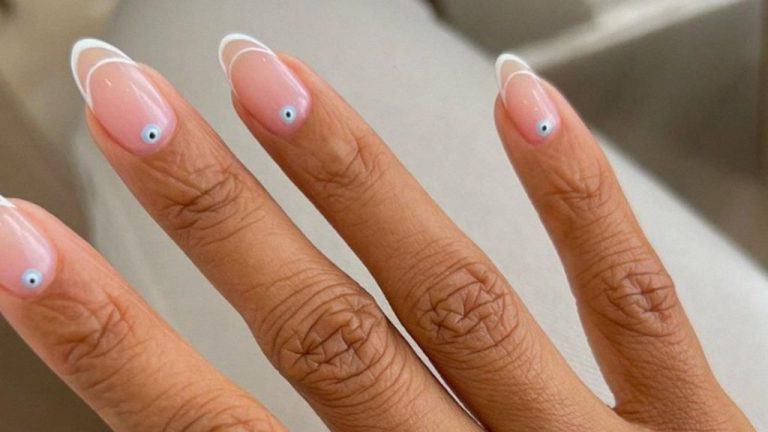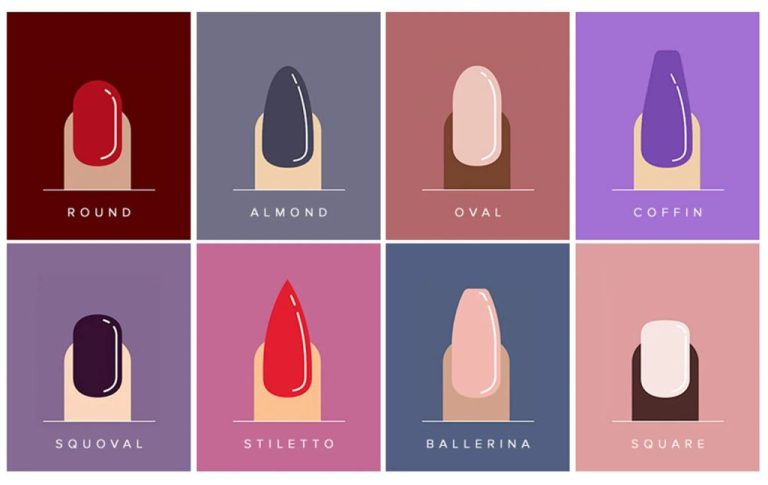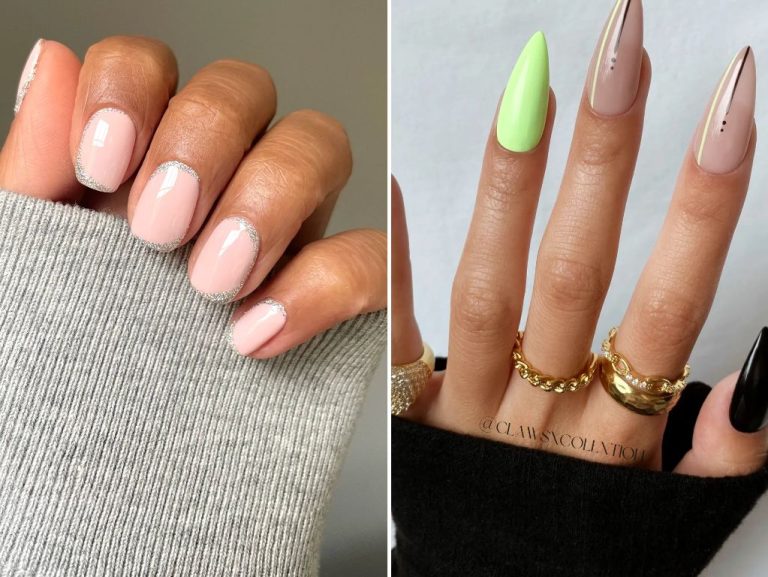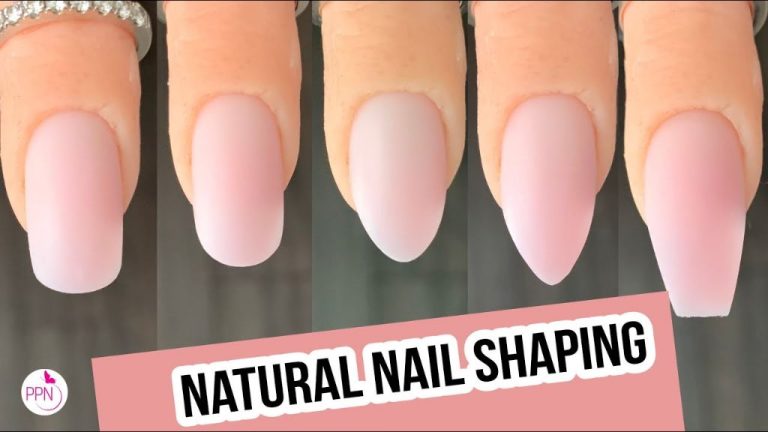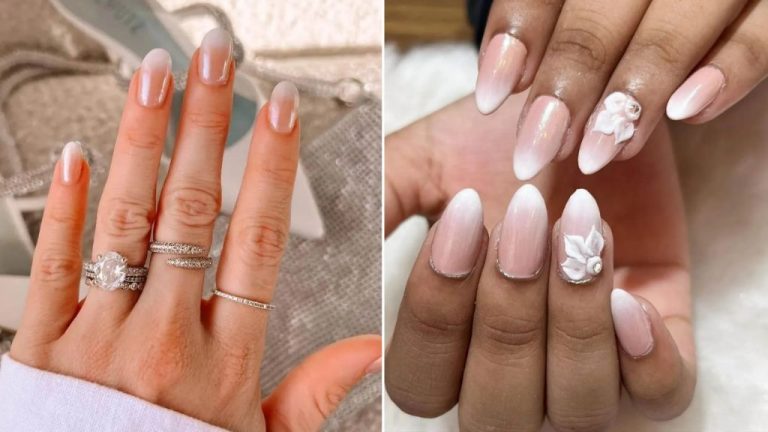Nail Shape Guide For Long Nails: Tips For Maintaining Length
Long nails have seen a major resurgence in popularity in recent years, especially with the rise of nail art trends on social media. While long nails allow for more creative freedom with nail art, shaping, and designs, they do require more maintenance and care to avoid breakage. The benefits of long nails include making your fingers appear slimmer and more elegant. The drawbacks are that long nails can be difficult to type with, do crafts or play sports, and are generally less sanitary. Despite some practical challenges, the stylish and eye-catching aesthetic of long nails continues to drive their popularity among fashionable nail art enthusiasts.
Choosing a Nail Shape
When growing out long nails, choosing the right nail shape is crucial for a stylish yet natural look. Some popular nail shapes for long nails include:
Square
Square nails feature straight edges and sharp corners. This shape works well for long nails since the straight edges help nails appear longer. The squared-off tips also provide more strength to prevent breaks (source). However, square nails may not suit short or wide nail beds as well.
Oval
Oval nails have a rounded shape that follows the natural curve of the fingertips. This gentle shape works for most nail lengths and widths. Oval nails tend to be less prone to breaking since stress isn’t focused on any sharp points or corners (source). The rounded edges give an elegant, understated look.
Almond
Almond-shaped nails are a hybrid between square and oval. They have a softened square shape with slightly rounded corners. Almond nails are versatile for accentuating different nail lengths and shapes. The narrowed tips help make nails appear longer without being too severe or sharp.
Stiletto
Stiletto nails taper to an extremely narrowed, pointed tip. This dramatic shape can elongate short nails. However, stiletto nails are prone to breaking and can be impractical for daily activities. They generally require professional application and maintenance.
Consider your lifestyle and nail bed shape when choosing a long nail shape. Square and oval shapes often suit long nails best for their reinforcement against breaks. Softer almond and round shapes work for most nail lengths and widths as well.
Prepping Nails
Properly prepping the nails is a crucial first step before applying extensions or polish to long nails. Start by filing the nails to the desired shape using a fine grit nail file. File in one direction and use a light touch to avoid weakening the nails. It’s important not to file off too much length when shaping long nails as this can compromise their strength.
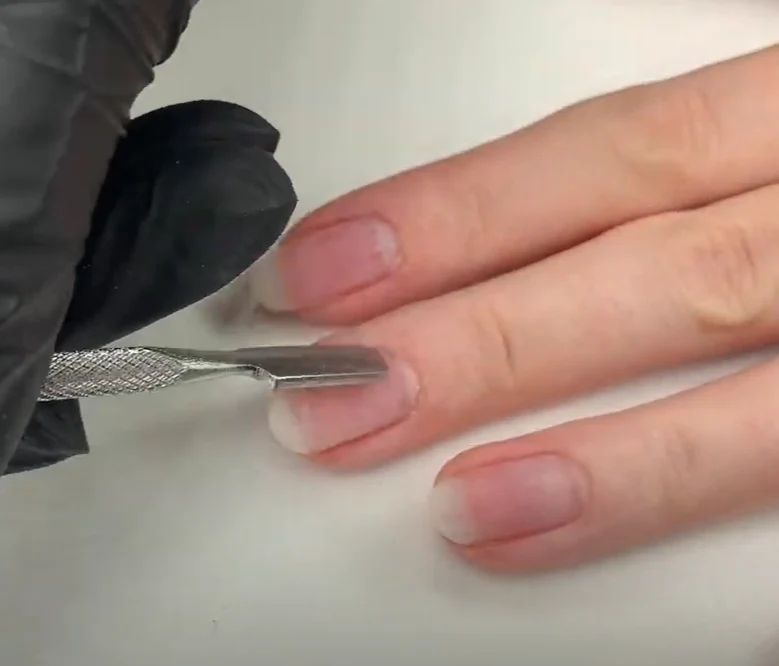
Next, use cuticle clippers to gently push back and trim any overgrown cuticles, taking care not to cut the skin. Then use a cuticle pusher to tidy the cuticle area and reveal the full nail plate. Remove any dead skin with a softening product or exfoliating scrub. This allows gel polish or extensions to properly adhere.
Buffing the nails lightly with a fine grit buffer smooths the surface for products to grab onto. Be sure to buff in the direction of growth to seal the keratin layers. Avoid over-buffing as this can thin the nails. Finish prepping by using nail dehydrator and primer to remove oils and prep the nail plate (source). Using quality nail strengthening treatments can also help fortify nails before lengthy enhancements.
Applying Nail Extensions
Nail extensions are a great way to help your natural nails gain length. By applying artificial material over your natural nails, you create an extension that allows you to grow your nails longer without the risk of breakage.
There are a few main types of nail extensions:
Acrylics – A powder and liquid are mixed together over your natural nail to create an acrylic extension. Acrylics help strengthen nails but require professional application and filling every 2-3 weeks.
Gels – Gel polish is applied over your natural nail and cured under a UV or LED lamp. Gels provide a durable and flexible extension that can last 2-3 weeks between fills.
Tips – Plastic or paper nail tips are glued onto your natural nail edge to create an instant extension. Tips are then layered with acrylic or gel for strength and color.
No matter which type you choose, extensions allow you to grow your natural nails longer with added strength and protection. This helps prevent breaks so you can maintain beautiful lengthy nails.
Shaping and Filing
The filing techniques you use when shaping long nails can help you maintain length and avoid breakage. For round nails, use a light touch and file evenly across the top from corner to corner to prevent stress points. For square nails, focus on sharpening the straight edge and smooth out the corners carefully. When shaping coffin or almond nails, file the sides straight and blend the tip smoothly into a point, taking care not to leave any ridges that could lead to breaks1. Stiletto nails require precision filing to extend the nail bed into a slender point.
As you file, keep nails hydrated with oil so the acrylic doesn’t become dry and brittle. Use a fine grit file in a light downward motion to seal the edge and finish the shaping. Avoid sawing back and forth aggressively, as too much friction and heat from filing can weaken the bonds in the acrylic and lift the edges over time. Take breaks between filing to let nails cool if needed. Patience and a gentle approach will help your long nail shape hold up!
Cuticle Care
Proper cuticle care is crucial for maintaining the health and length of your nails. Pushing back the cuticles regularly prevents hangnails and overgrowth that can lead to splitting and breakage. Use a cuticle pusher gently once a week to push back the cuticles, taking care not to damage the nail bed.
Avoid pulling or tearing at hangnails, as this can cause injury and open up areas for infection. If you get a hangnail, clip it carefully with nail clippers. Be sure to disinfect your tools before each use.
Apply a nourishing cuticle oil or cream daily to keep the nails and cuticles soft and conditioned. Products with ingredients like vitamin E, jojoba, and coconut oil help hydrate the nails and prevent brittle, dry cuticles (Source). Gently massage the oil into the nail beds and cuticles. This stimulates circulation which encourages healthy nail growth.
Nail Polish
When it comes to nail polish for long nails, opting for quality, long-lasting brands is key. Drugstore polishes tend to chip faster, while salon quality lacquers like OPI and Essie will stay put for over a week without chipping. Using a base coat will also help polish adhere better and last longer.
Darker polish colors like deep reds, blues and plums will make nails appear longer than nude or pastel shades. Go for a high-gloss or metallic finish to really accentuate the length. Matte polishes can sometimes shorten the look of nails. An occasional sheer polish or French manicure can be pretty on long nails, but use those finishes sparingly.
Maintenance
Keeping long acrylic nails looking fresh requires diligent maintenance and upkeep between salon appointments. The general recommendation is to get a fill every 2-3 weeks to prevent lifting or cracking as the natural nail grows out (Cosmopolitan, 2019). During this appointment, the technician will fill in the new growth at the cuticle area and reshape the nails as needed. Get a full new set every 2-3 months when significant length has been lost from filing and shaping during fills.
At home, be gentle with your nails to avoid breaks. Avoid using your nails as tools and try not to catch them on things. Apply cuticle oil daily to hydrate the nail beds and prevent lifting. Use a glass nail file to gently buff away any small lifts or cracks. Store your nail file in a clean, dry place since bacteria can collect in the grit. Before bed, wipe nails with rubbing alcohol to sanitize them. See your technician right away if you notice any injuries or excessive lifting between appointments (Reddit, 2021).
Avoiding Breakage
One of the biggest challenges when growing out long nails is avoiding breakage, especially at the tips. Here are some tips for reinforcing nails and protecting the tips:
Use a strengthening base coat like ORLY Rubberized Base Coat (source). This will help reinforce the nails and prevent cracks and peeling.
Apply gel or acrylic overlays to nail tips. These overlays reinforce natural nails and help protect the tips as they grow out (source).
Avoid using nails as tools. Opening cans, picking at things, etc. can cause breaks, especially with longer nails. Use tools instead of fingernails for these tasks.
Moisturize nails and cuticles daily. Keeping nails hydrated prevents brittleness and cracking (source). Massage cuticle oil into nails and cuticles morning and night.
Protect hands from chemicals and water damage. Wear gloves when washing dishes, cleaning, or using harsh chemicals. The less hands are exposed to drying/damaging elements, the stronger nails will be.
Avoid excessive filing at the tips. Filing too thin or aggressively can weaken nails. Use a light touch when shaping tips.
Handle nails gently. Avoid using nails as tools and be careful not to bang or snag tips on surfaces. The more fragile longer nails are treated, the less likely they are to break.
When to Take a Break
If your nails are showing signs of excessive breakage and damage, it may be time to take a break from long nails and allow them to recover. Going back to a shorter natural nail length for a period of time can help strengthen nails and repair damage.
Signs that your nails need a rest include:
- Frequent breaking, peeling, splitting, chipping or cracking
- Noticeable thinning of the nails
- Discoloration or white/yellowing spots
- Ridges or grooves along the nail
When this type of excessive damage occurs, it’s best to remove any gel polish, acrylics or other false nail enhancements and trim nails shorter for recovery. Aim to cut them down to just above the fingertips. At this shorter length, there will be less stress and pressure on the fragile nail beds as they start to regenerate and rebuild strength.
It can take several weeks to months for damaged nails to fully recover. Be diligent about moisturizing cuticles daily with cuticle oil and applying a strengthening treatment or nail hardener while you allow them to grow out. It’s also important to avoid picking at or biting the nails during this healing phase. With some patience and TLC, taking a break from the strain of ultra long nails can get them back into healthy shape again.
